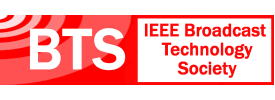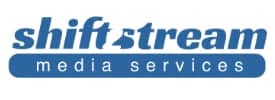- About
- Members
- Sponsors
- Subcommittees
- About Our Subcommittees
- Technology Group 3
- Implementation Team 1 – Advanced Emergency Information
- Implementation Team 2 – India
- Implementation Team 3 – ATSC 3.0 Conformance
- Implementation Team 4 – Brazil
- Implementation Team 5 – Tower Network
- Implementation Team 7 – Caribbean
- Implementation Team 8 – Automotive
- Planning Team 4 – Future Broadcast Ecosystem Technologies
- Planning Team 5 – Automotive Applications
- Planning Team 6 – Global Recognition of ATSC 3.0
- Planning Team 9 – Sustainability
- Technical Documents
- News
- Events
- Spotlight ATSC 3.0
- Contact Us
- Member Login
- Member Meetings
- Advanced Search
Search Site
Member Links
- About
- Members
- Sponsors
- Subcommittees
- About Our Subcommittees
- Technology Group 3
- Implementation Team 1 – Advanced Emergency Information
- Implementation Team 2 – India
- Implementation Team 3 – ATSC 3.0 Conformance
- Implementation Team 4 – Brazil
- Implementation Team 5 – Tower Network
- Implementation Team 7 – Caribbean
- Implementation Team 8 – Automotive
- Planning Team 4 – Future Broadcast Ecosystem Technologies
- Planning Team 5 – Automotive Applications
- Planning Team 6 – Global Recognition of ATSC 3.0
- Planning Team 9 – Sustainability
- Technical Documents
- News
- Events
- Spotlight ATSC 3.0
- Contact Us
- Member Login
- Member Meetings
- Advanced Search
CHAT ROOM: Embracing Change
Posted on September 3, 2018 in ATSC News
In the Chat Room this month, THE STANDARD sat down with former ATSC Board Chairman Glenn Reitmeier, who was just volunteered to lead the new ATSC Planning Team on Future Video Technologies. The Senior Vice President at NBC Universal has been heavily involved in digital television since its inception, from his days at Sarnoff during the ATSC 1.0 development days a generation ago.
THE STANDARD: You’re one of the few lucky individuals who’s played a key role in the development of ATSC 1.0, 2.0 and 3.0 – and now looking ahead to what someday might become ATSC 4.0. We’d love to hear your perspectives on where we’ve come from, where we are today and where we’re headed.
REITMEIER: Well (laughing), I’m not sure whether that was “luck” or a “curse.” Seriously, I never thought I’d have the opportunity to contribute to a sea-change standard more than once in a career. Looking back over nearly 30 years since the early conceptualization of digital TV during the 1989-91 timeframe through today, I do have a few observations.
First is the incredible impact of Moore’s law on what we consider “practical.” In the four original digital system proposals and then the Grand Alliance, we took the biggest leaps that we could dare to imagine. There were many skeptics who said that we were crazy – they pointed to our many racks of special-purpose, power-hungry hardware and said that digital HDTV would never be an affordable consumer product. Well, as we know, today those encoding functions are implemented as software on a server, or are highly integrated in a single receiver chip. So, we should stretch as far as we can imagine in new standards – and we’ve done a really good job of this with ATSC 3.0 – but we also should realize that what seems barely possible today will eventually become relatively simple.
Second, amazing advances are continuing in video and audio compression. In the Grand Alliance days, the prospect of compressing HD to19 Mbps for a 6MHz channel was daunting; indeed, many skeptics said it was “impossible.” Today, even with good ol’ MPEG-2, we routinely put two HD streams and several SD multicast streams in 19 megabits. And even more significant gains have come with new generations of codecs – first AVC, now HEVC and the prospect of VVC in the future. The advances in scalable coding are also notable, too; hang on to that thought.
Third, when we had to simulcast DTV and analog, the modulation challenge was how to simulcast digital without interfering with analog or vice versa. Today’s sophisticated new modulation techniques now provide flexibility for a huge number of modcod and coding rate parameters that allow us to tradeoff between data rate and robust reception. And, we can configure multi-tier services with scalable codecs, that may finally achieve the vision of providing spectrally-efficient robust indoor reception. I say ‘finally’ because we had two-tier digital system proposals in the early ‘90s – even before the Grand Alliance – in Sarnoff’s Advanced Digital HDTV (two QAMs) and in Zenith’s Digital Spectrum Compatible HDTV (4/2 VSB).
Combining these three observations, the pace of digital technology advances in chips and the prospect of continuing advances in compression and transmission means that we have to think differently about standards. It used to be that standards came in big steps and that we expected subsequent periods of decades-long stability. Indeed the conventional wisdom of the 2000s was that we would transition from analog NTSC to digital ATSC and then live happily ever after. That’s just not the case in today’s digital world. I think the desire to transition to 3.0 was a complete shock to many. I got a lot crazy looks when I first floated the idea to the ATSC Board, which then started planning teams to study the possibilities back in 2010. Now, thanks to the hard work of hundreds of smart people, ATSC 3.0 is a reality!
THE STANDARD: Thanks, Glenn, for your keen insights. Can you please tell us how the work of the new Planning Team fits into this vision of the future?
REITMEIER: With ATSC 3.0 and broadcasting on the Internet technology track, we need to anticipate and plan for ongoing improvements and migration, as Internet-based businesses and standards do. How’s that possible? With the paradigm of channel-sharing and simulcasting in an evolving mix of 3.0 and 1.0 stations, we have the template. We just have to continually apply it.
Our new Planning Team will focus on future video technologies, things like 8K transmission, new codecs and the like. This group gives ATSC members the opportunity to collaborate on an evolving industry roadmap. We’ll have to think about what longer-term changes will be impactful for broadcasters, receiver manufacturers and consumers and how to introduce them. We’ll consider technical and market requirements and, down the road, the potential impact on already-deployed ATSC 3.0 receivers.
I guess this all comes down to embracing the fact that “the only thing constant in life is change.” Frankly, I think we must always be in a constant state of transition between an “old” system and a “new” one in order to avoid obsolescence and to survive.
THE STANDARD: New codecs aside, what are some of the key aspects of ATSC 3.0 today and its evolution that excite you about the near- and longer-term future for Next Gen TV?
REITMEIER: It’s exciting that with UHD resolution, HDR pictures, HFR motion and immersive audio, 3.0 will give us lots of runway to deliver even higher quality, more impactful viewing experiences than HDTV. I’m also excited that our early vision of scalable coding with robust indoor reception may become a reality. And I still believe that providing a more personalized and interactive viewing experience is a game-changer. We had that vision in the Grand Alliance and ATSC 1.0 (remember ACAP?) and ATSC 2.0, but gaining commercial traction has been an elusive goal. I’m optimistic that, with HTML5, we’ll be so aligned with the Internet that those concepts will finally advance. The bottom line is that, while still in its infancy, Next Gen TV is here and the future is bright, especially for viewers who will experience all it has to offer in the years ahead.
For a trip through the ATSC Time Tunnel, Reitmeier suggests checking out some of the early vision of DTV: Data and interactive apps in the “1995 Grand Alliance Washington Demo” [https://vimeo.com/283813336], and two-tier coding and transmission in “1992 Advanced Digital HDTV ‘Childs Play’ video [https://vimeo.com/284819113].
Posted in ATSC News
News Categories
News Archives
Subscribe
Subscribe to The Standard, our monthly newsletter. Learn More
Join ATSC
ATSC is a membership organization with both voting and observer categories. Voting members include corporations, nonprofit organizations, and government entities, and they participate actively in the work of ATSC. Observers are individuals or entities not eligible to be a voting member.
Subscribe to our Newsletter
Subscribe to The Standard, our monthly newsletter, to stay up-to-date with ATSC news and events around the world.
Site Links
Contact Us
Advanced Television Systems Committee, Inc.
1300 I Street NW, Suite 400E
Washington, DC 20005
Do you have questions about ATSC?
About ATSC
The Advanced Television Systems Committee, Inc., is an international, non-profit organization developing voluntary standards and recommended practices for digital terrestrial broadcasting. ATSC member organizations represent the broadcast, broadcast equipment, motion picture, consumer electronics, computer, cable, satellite, and semiconductor industries. ATSC also develops digital terrestrial broadcasting implementation strategies and supports educational activities on ATSC standards.
© 2024 ATSC









































